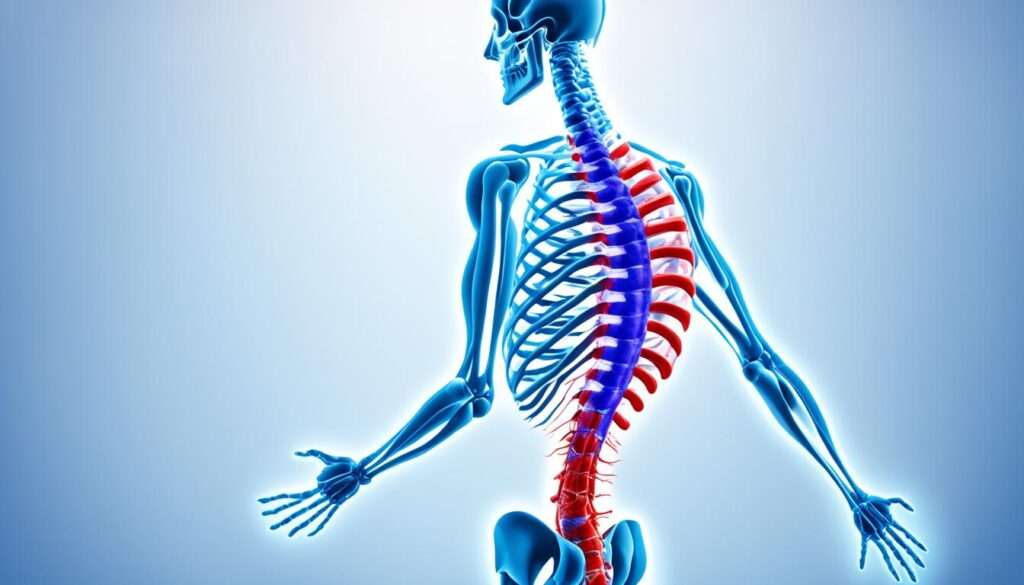Trauma can have far-reaching effects on the body, especially on the nervous system. Understanding the connection between trauma and neurological symptoms is crucial for effective diagnosis and treatment. This blog explores how trauma affects the nervous system, highlighting various conditions, including Brown-Séquard Syndrome. We will delve into the mechanisms behind trauma-induced neurological symptoms and discuss their implications for medical care.
The Connection Between Trauma and Neurological Symptoms
Trauma, whether physical or psychological, can significantly impact the nervous system. The nervous system comprises the brain, spinal cord, and peripheral nerves, all of which are vulnerable to injury. Trauma can disrupt the normal function of these components, leading to a wide range of neurological symptoms.
Types of Trauma
- Physical Trauma: Injuries from accidents, falls, sports, and violent incidents can directly damage the nervous system. For example, spinal cord injuries, traumatic brain injuries (TBI), and nerve damage are common results of physical trauma.
- Psychological Trauma: Emotional and psychological stress from events such as abuse, war, or severe personal loss can also affect the nervous system, contributing to conditions like post-traumatic stress disorder (PTSD).
Mechanisms Behind Trauma-Induced Neurological Symptoms
Trauma can cause neurological symptoms through various mechanisms:
- Direct Injury: Physical trauma can directly damage neural tissue, leading to loss of function. For example, a blow to the head can cause TBI, while a spinal injury can disrupt nerve pathways.
- Inflammation: Trauma often triggers an inflammatory response, which can lead to secondary damage in the nervous system. Swelling and inflammation can compress nerves and disrupt normal function.
- Ischemia: Reduced blood flow (ischemia) due to trauma can deprive neural tissues of oxygen and nutrients, leading to cell death and neurological deficits.
- Psychological Stress: Chronic psychological stress can alter brain function and structure, contributing to neurological symptoms such as anxiety, depression, and cognitive impairments.

Common Neurological Symptoms Resulting from Trauma
The neurological symptoms resulting from trauma vary widely depending on the type and severity of the injury. Common symptoms include:
Motor Symptoms
- Weakness or Paralysis: Trauma to the brain or spinal cord can result in weakness or paralysis in various parts of the body.
- Coordination Issues: Damage to the cerebellum or peripheral nerves can affect coordination and balance, leading to difficulties in movement.
Sensory Symptoms
- Numbness or Tingling: Injuries to peripheral nerves or the spinal cord can cause sensations of numbness or tingling in affected areas.
- Pain: Trauma can result in chronic pain, either from direct nerve damage or secondary effects such as inflammation.
Cognitive and Emotional Symptoms
- Memory Problems: Traumatic brain injuries can impair memory and cognitive function.
- Mood Disorders: Psychological trauma can lead to mood disorders such as depression, anxiety, and PTSD.
- Cognitive Impairments: Difficulties with concentration, decision-making, and problem-solving are common after brain injuries.
Brown-Séquard Syndrome: A Case Study in Trauma-Induced Neurological Symptoms
Brown-Séquard Syndrome is a neurological condition often resulting from trauma. It provides a clear example of how physical injury can lead to specific neurological symptoms.
Brown-Séquard Syndrome Symptoms
According to Dr. Chandril Chugh, the Brown Sequard Syndrome Symptoms include:
- Ipsilateral Muscle Weakness or Paralysis: This occurs on the same side as the injury due to damage to the corticospinal tract, which transmits motor signals from the brain to the body.
- Contralateral Loss of Pain and Temperature Sensation: This symptom arises on the side opposite the injury, resulting from disruption of the spinothalamic tract that carries sensory information to the brain.
- Ipsilateral Loss of Proprioception and Vibration Sensation: Loss of these sensations on the same side as the injury affects the dorsal columns.
- Bladder and Bowel Dysfunction: Depending on the level of spinal injury, patients may experience difficulties with bladder and bowel control.
Causes of Brown-Séquard Syndrome
Brown-Séquard Syndrome often results from trauma, such as stab wounds or gunshot injuries, that damages one side of the spinal cord. Other causes include spinal tumors, infections, and inflammatory diseases. This syndrome exemplifies how specific types of trauma can lead to distinct patterns of neurological symptoms.
Diagnosing Trauma-Induced Neurological Symptoms
Early and accurate diagnosis of trauma-induced neurological symptoms is crucial for effective treatment. The diagnostic process typically involves:
Medical History and Physical Examination
- History: A detailed medical history helps identify the type and extent of trauma and any pre-existing conditions.
- Examination: A thorough neurological examination assesses motor and sensory functions, reflexes, and cognitive abilities.
Imaging Studies
- CT Scans and MRIs: These imaging techniques visualize structural damage to the brain, spinal cord, and peripheral nerves.
- X-Rays: X-rays can detect fractures and other bone injuries that may impact the nervous system.
Electrophysiological Tests
- Electromyography (EMG) and Nerve Conduction Studies (NCS): These tests evaluate the electrical activity of muscles and nerves, helping diagnose nerve damage.
Psychological Assessments
- Psychiatric Evaluation: Psychological assessments identify emotional and cognitive symptoms resulting from trauma.
Treatment and Management of Trauma-Induced Neurological Symptoms
Effective treatment and management of trauma-induced neurological symptoms involve a multidisciplinary approach, combining medical, surgical, and rehabilitative strategies.
Medical Management
- Medications: Pain relievers, anti-inflammatory drugs, and medications for mood disorders help manage symptoms.
- Physical Therapy: Physical therapy improves strength, coordination, and mobility, helping patients regain function.
Surgical Intervention
- Surgery: Surgical procedures may be necessary to repair damaged tissues, relieve pressure on nerves, or remove foreign objects.
Psychological Support
- Counseling and Therapy: Psychological support, including counseling and cognitive-behavioral therapy, addresses emotional and cognitive symptoms. Support groups and therapy help patients cope with trauma-related stress.
Rehabilitation
- Occupational Therapy: Occupational therapists help patients adapt to daily activities, improving their quality of life.
- Speech Therapy: Speech therapy addresses communication difficulties resulting from brain injuries.
Long-Term Management and Recovery
Recovery from trauma-induced neurological symptoms can be a long-term process. Ongoing management focuses on maximizing function, preventing complications, and improving quality of life.
Regular Follow-Up
- Monitoring: Regular follow-up appointments monitor progress and adjust treatment plans as needed.
- Rehabilitation: Continued rehabilitation helps maintain and improve physical and cognitive functions.
Lifestyle Modifications
- Healthy Lifestyle: Adopting a healthy lifestyle, including a balanced diet, regular exercise, and stress management, supports recovery.
- Assistive Devices: Using assistive devices, such as wheelchairs or communication aids, enhances independence.
Support Systems
- Family and Community Support: Strong support systems, including family, friends, and community resources, play a vital role in recovery.
- Support Groups: Joining support groups connects individuals with others experiencing similar challenges, providing emotional and practical support.

The Role of Research and Education
Ongoing research and education are crucial for improving the understanding and management of trauma-induced neurological symptoms. Advancements in medical science and increased awareness can lead to better outcomes for patients.
Research Initiatives
- Clinical Trials: Participating in clinical trials helps develop new treatments and interventions for trauma-induced neurological symptoms.
- Innovative Therapies: Research into innovative therapies, such as neuroplasticity and regenerative medicine, holds promise for improving recovery.
Education and Awareness
- Public Awareness Campaigns: Raising awareness about the connection between trauma and neurological symptoms encourages early diagnosis and intervention.
- Professional Training: Providing healthcare professionals with specialized training improves the diagnosis and management of trauma-related neurological conditions.
Conclusion
Understanding the connection between trauma and neurological symptoms is essential for effective diagnosis and treatment. Trauma can have profound and lasting effects on the nervous system, leading to a wide range of symptoms. Early and accurate diagnosis, combined with comprehensive treatment and rehabilitation, can significantly improve outcomes for individuals affected by trauma-induced neurological conditions. By continuing to explore and address these connections through research, education, and support, we can enhance the quality of life for those impacted by trauma.










